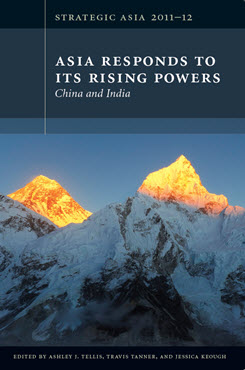Coping with Giants
South Korea's Responses to China's and India's Rise
This chapter assesses Korean efforts to maximize a range of security and economic interests with the major powers of the Asian strategic landscape—especially China and India—without weakening South Korea’s central alliance with the U.S. or loosening its growing linkages with the international system.
EXECUTIVE SUMMARY
This chapter assesses Korean efforts to maximize a range of security and economic interests with the major powers of the Asian strategic landscape—especially China and India—without weakening South Korea’s central alliance with the U.S. or loosening its growing linkages with the international system.
MAIN ARGUMENT
Since the 1950s, Seoul’s foreign policy has been driven principally by deterrence and defense requirements vis-à-vis North Korea. This dynamic has accelerated South Korea’s economic development through robust international trade and ameliorated the harsher vestiges of Northeast Asia’s brutal geopolitics. How South Korea chooses to define and operationalize its national security strategies in the new geopolitics of the 2020–30 timeframe, when transitions are likely to have occurred in the North, will also likely determine the trajectory of a potentially unified Korea.
POLICY IMPLICATIONS
- South Korea should continue modernizing and upgrading its central alliance with the U.S. to coshape a mutually beneficial “smart power” grid in Northeast Asia, including key ties with China and Japan.
- Seoul should pay greater attention to matching U.S. and Chinese capacity-building related to nonlinear transitions on the Korean Peninsula and work to enhance the peninsula’s role as a facilitator of intraregional cooperation.
- South Korea must sustain military reforms to address the modernized power-projection platforms possessed by its more powerful neighbors while adhering fully to a non-nuclear posture.
- Seoul must demonstrate its ability to forge a comprehensive policy conducive to ensuring a globalized Asia as one of the principal pillars of the emerging world order.
Strategic Asia
The Strategic Asia annual edited volume incorporates assessments of economic, political, and military trends and focuses on the strategies that drive policy in the region. Learn more about Strategic Asia.


